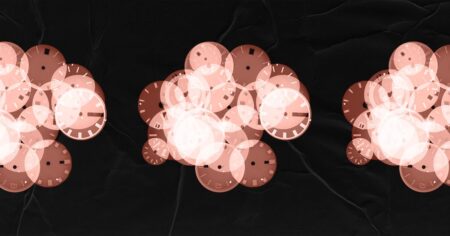When Bruce Springsteen announced he’s postponing his performances due to symptoms of peptic ulcer disease, he revealed he’s being treated for a common stomach problem.
Peptic ulcer disease affects 4 million people worldwide each year, with up to 10% of the general population expected to experience it in their lifetime, studies have found.
The condition can be painful and lead to complications, but can be treated with medicines.
What is peptic ulcer disease?
A peptic ulcer is an open sore in the lining of the stomach or the first part of the small intestine, according to the American College of Gastroenterology. It’s often called a stomach ulcer. The acids that help digest food can cause this damage in some people, the National Library of Medicine explains.
Peptic ulcers are diagnosed using a scope, Dr. Scott Gabbard, a gastroenterologist with Cleveland Clinic, tells TODAY.com. Because most people with peptic ulcers, about 30%, don’t feel any pain, they’re usually discovered because a patient has blood in their stool, their blood counts are low, or they get a scope for an unrelated reason.
The major risks of untreated peptic ulcers are bleeding and, more rarely, a stomach perforation, where the ulcer creates a hole in the wall and can lead to a “surgical emergency,” Gabbard says.
What are peptic ulcer disease symptoms?
The most common symptom is abdominal pain in the upper part of the abdomen — anywhere between the belly button and breastbone, the National Institute of Diabetes and Digestive and Kidney Diseases notes. It may be dull or burning, and may come and go. Gabbard says patients may also notice a “stabbing” pain.
Eating may make the pain worse for some people; for others, an empty stomach leads to pain and eating results in relief.
Other symptoms may feel like indigestion and include:
- Feeling full too soon while eating a meal.
- Feeling uncomfortably full after eating a meal.
- Nausea and vomiting.
- Bloating.
- Belching.
Many people have no symptoms until they develop complications, such as bleeding from an ulcer. The bleeding can be slow or cause a life-threatening hemorrhage, the American College of Gastroenterology warns.
Seek medical attention if you have symptoms such as:
- Stool that’s jet black and very sticky, or contains lots of dark red or maroon blood.
- Throwing up red blood or having vomit that looks like coffee grounds.
- Sudden, sharp or severe abdominal pain that doesn’t go away.
- Feeling dizzy or fainting.
- Fatigue, shortness of breath with exercise and pale skin color, which can be warning signs of anemia.
Peptic ulcer disease causes
People used to think that stress or spicy foods caused stomach ulcers, but diet doesn’t actually play much of a role in developing them, Gabbard says, adding that a bacterial infection and certain medications are the most common causes of peptic ulcers.
Bacterial infection: People infected with the bacterium Helicobacter pylori, also called H. pylori, have a higher risk of developing peptic ulcers, according to the American College of Gastroenterology. Gabbard estimates that about 25% of the U.S. population has the bacteria, but most people with it don’t develop ulcers. The bacteria are associated with reduced sanitary practices, Gabbard adds.
Common pain relievers: Taking nonsteroidal anti-inflammatory drugs — including aspirin, ibuprofen and naproxen — especially for a long time or at high doses, is another risk factor. That’s because the stomach secretes chemicals to protect its lining, and these medications affect the stomach’s ability to do so, Gabbard explains.
Other risk factors include:
- Older age. Springsteen is 73.
- Smoking.
- Having had a peptic ulcer before.
- Heavy drinking, such as six or more drinks a day.
- Genetics.
Peptic ulcer disease treatment
If a patient with a peptic ulcer is found to have H. pylori bacteria in their system, then they will receive two weeks’ worth of a combination of antibiotics and medicine to protect the stomach’s lining, namely a proton pump inhibitor, Gabbard explains.
Patients without H. pylori will usually need just a proton pump inhibitor. The time it takes for a proton pump inhibitor to heal a peptic ulcer depends on its size and location. Smaller ones can take two weeks; larger ones may need a full two months of treatment.
“(Peptic ulcers) are very easy to treat, once found, with proton pump inhibitors,” Gabbard says.
That said, he recommends taking Springsteen’s health news as an opportunity to look at what medications you’re taking and how much. “Just make sure that (your) primary care provider is aware of all the medicines you’re taking … especially over the counter (so they can) make sure (you) don’t need something like a medication to help protect the lining of the stomach,” Gabbard stresses.
Bruce Springsteen’s health
The singer has been open about keeping his mental and physical health on track. A 2012 profile in The New Yorker revealed Springsteen has experienced “intervals of depression.” Therapy helped, his wife Patti Scialfa said.
The same article detailed the exercise regimen Springsteen has followed for decades: He runs or walks on a treadmill and works out with weights.
The rock star credits healthy eating for being able to perform at his best during long concerts.
“The biggest thing is diet, diet, diet,” Springsteen said during a podcast with country singer Tim McGraw in 2021.
“I don’t eat too much, and I don’t eat bad food, except for every once in a while when I want to have some fun for myself. So I think anybody that’s trying to get in shape, exercise is always important of course, but diet is 90% of the game.”
TODAY’s Maura Hohman contributed reporting.
Read the full article here











